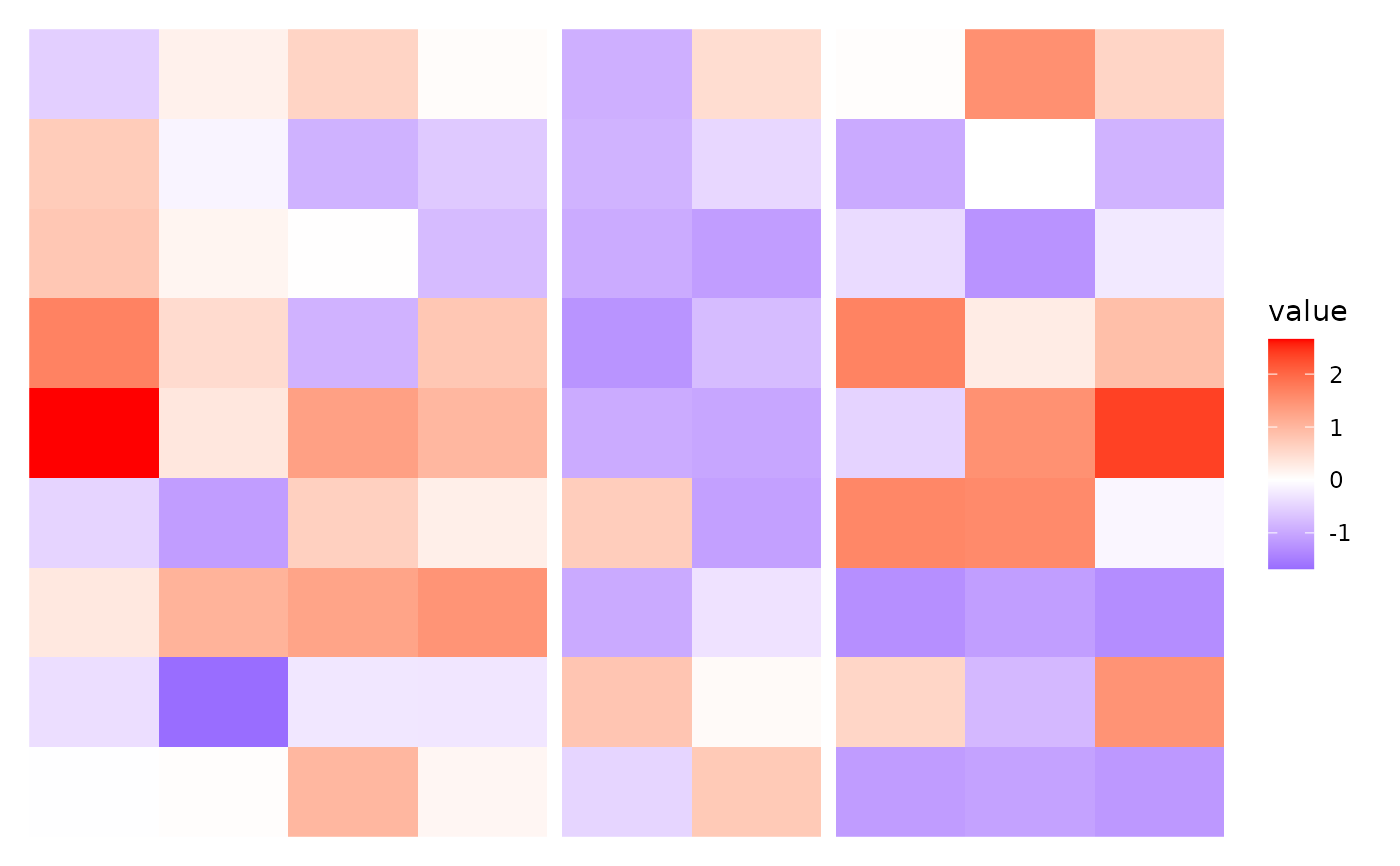
Reorder or Group observations based on hierarchical clustering
Source:R/craft-align-hclust.R
align_hclust.RdThis function aligns observations within the layout according to a hierarchical clustering tree, enabling reordering or grouping of elements based on clustering results.
Usage
align_hclust(
distance = "euclidean",
method = "complete",
use_missing = "pairwise.complete.obs",
reorder_dendrogram = FALSE,
reorder_group = FALSE,
k = NULL,
h = NULL,
cutree = NULL,
data = NULL,
active = NULL
)Arguments
- distance
A string of distance measure to be used. This must be one of
"euclidean","maximum","manhattan","canberra","binary"or"minkowski". Correlation coefficient can be also used, including"pearson","spearman"or"kendall". In this way,1 - corwill be used as the distance. In addition, you can also provide adistobject directly or a function return adistobject. UseNULL, if you don't want to calculate the distance.- method
A string of the agglomeration method to be used. This should be (an unambiguous abbreviation of) one of
"ward.D","ward.D2","single","complete","average"(= UPGMA),"mcquitty"(= WPGMA),"median"(= WPGMC) or"centroid"(= UPGMC). You can also provide a function which accepts the calculated distance (or the input matrix ifdistanceisNULL) and returns ahclustobject. Alternative, you can supply an object which can be coerced tohclust.- use_missing
An optional character string giving a method for computing covariances in the presence of missing values. This must be (an abbreviation of) one of the strings
"everything","all.obs","complete.obs","na.or.complete", or"pairwise.complete.obs". Only used whendistanceis a correlation coefficient string.- reorder_dendrogram
A single boolean value indicating whether to reorder the dendrogram based on the means. Alternatively, you can provide a custom function that accepts an
hclustobject and the data used to generate the tree, returning either anhclustordendrogramobject. Default isFALSE.- reorder_group
A single boolean value, indicates whether we should do Hierarchical Clustering between groups, only used when previous groups have been established. Default:
FALSE.- k
An integer scalar indicates the desired number of groups.
- h
A numeric scalar indicates heights where the tree should be cut.
- cutree
A function used to cut the
hclusttree. It should accept four arguments: thehclusttree object,distance(only applicable whenmethodis a string or a function for performing hierarchical clustering),k(the number of clusters), andh(the height at which to cut the tree). By default,cutree()is used.- data
A matrix-like object. By default, it inherits from the layout
matrix.- active
A
active()object that defines the context settings when added to a layout.
Discrete Axis Alignment
It is important to note that we consider rows as observations, meaning
vec_size(data)/NROW(data) must match the number of observations along the
axis used for alignment (x-axis for a vertical stack layout, y-axis for a
horizontal stack layout).
